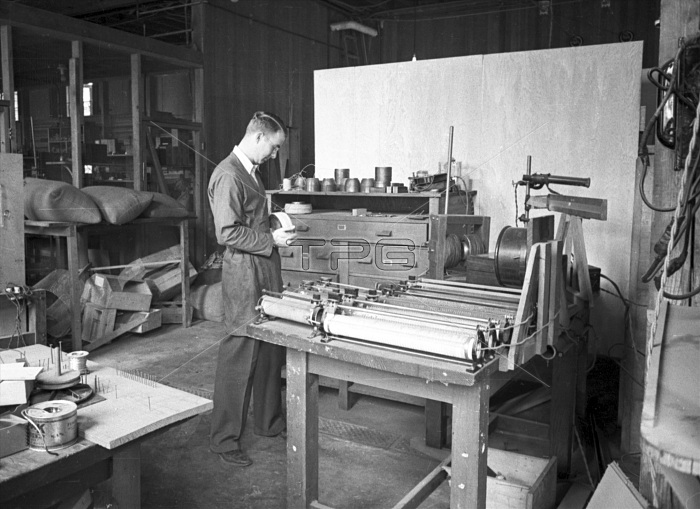
Alvarez with lab setup (possibly associated with the 37 inch cyclotron), April 1, 1937. Luis Walter Alvarez (June 13, 1911 - September 1, 1988) was an American experimental physicist, inventor, and professor. In 1936, he went to work for Ernest Lawrence at the Radiation Laboratory at the University of California, where he devised a set of experiments to observe K-electron capture in radioactive nuclei, predicted by the beta decay theory but never observed. In 1940 he joined the MIT Radiation Laboratory, where he contributed to a number of WWII radar projects. He spent a few months at the University of Chicago working on nuclear reactors for Fermi before coming to Los Alamos to work for Oppenheimer on the Manhattan project. After the war Alvarez was involved in the design of a liquid hydrogen bubble chamber that allowed his team to take millions of photographs of particle interactions, develop complex computer systems to measure and analyze these interactions, and discover entire families of new particles and resonance states. This work resulted in his being awarded the Nobel Prize in 1968. With his son, geologist Walter Alvarez, he developed the Alvarez hypothesis which proposes that the extinction event that wiped out the dinosaurs was the result of an asteroid impact. He died of cancer in 1988 at the age of 77.
| px | px | dpi | = | cm | x | cm | = | MB |
Details
Creative#:
TOP22170461
Source:
達志影像
Authorization Type:
RM
Release Information:
須由TPG 完整授權
Model Release:
No
Property Release:
No
Right to Privacy:
No
Same folder images:

 Loading
Loading